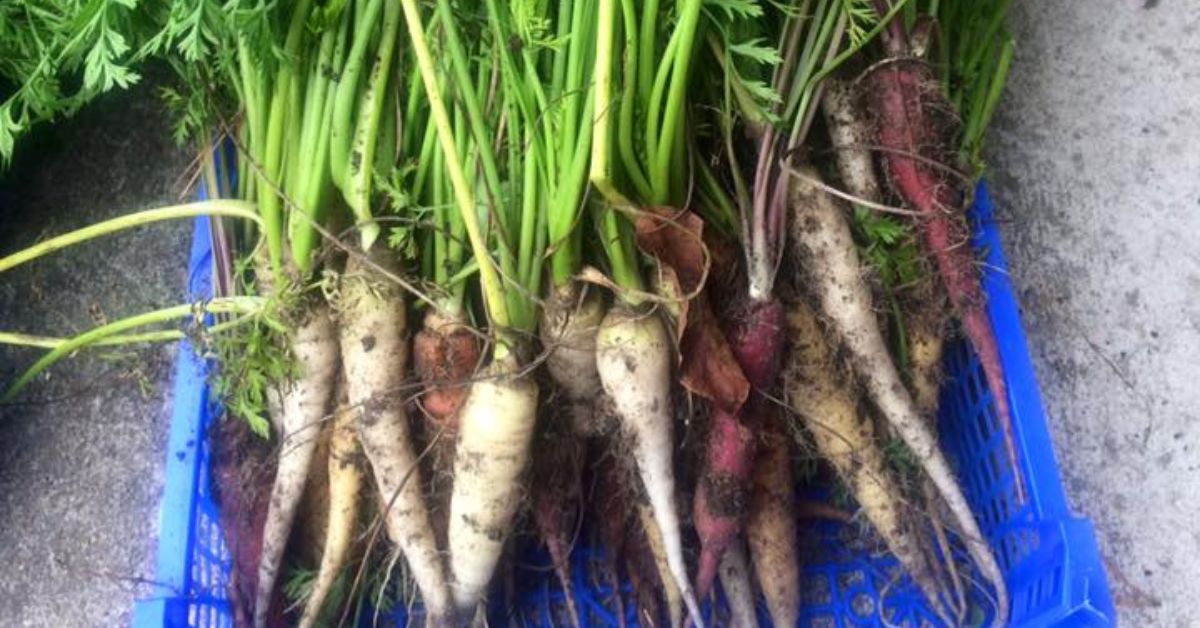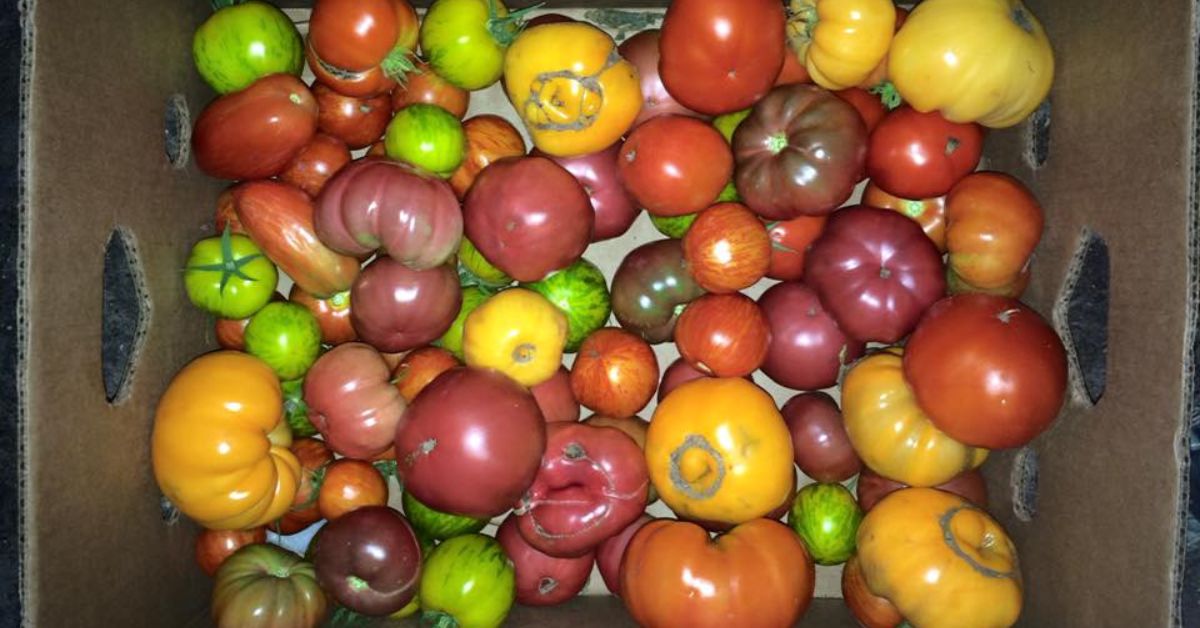
Tips for Cooking With Home-Grown Heirloom Vegetables
08:29 AMGrowing your own heirloom vegetables can be an incredibly rewarding and delicious experience. Heirloom vegetables, popular for their rich histories and exceptional flavors, offer a unique culinary advantage that few store-bought produce can match. These non-hybrid plants continue to preserve their outstanding taste and natural diversity.
Cooking with these vegetables does require some thought, as their profiles can differ significantly from common supermarket offerings. They come in unusual shapes, textures, or colors, which can affect their performance in certain recipes.
Understanding how to bring out their best attributes while maintaining their integrity ensures you create dishes that are as delicious as they are visually appealing. These tips for cooking with home-grown heirloom vegetables can help you maximize the culinary potential of your meals.
Understand the Unique Flavors of Heirloom Varieties
Each heirloom vegetable has a distinct flavor profile requiring special consideration during meal preparation. Flavor notes can range from sweet and mild to bold and earthy, depending on the variety. Pair heirloom vegetables with complementary ingredients that enhance their natural flavors while balancing your dish.
Experiment with a variety of heirloom vegetables to discover their culinary versatility and uses. Heirloom tomatoes often shine in fresh salads or cooked sauces due to their robust flavors. Taste-test your vegetables as you cook to grasp better how heat and seasoning alter their taste.
Start with Simple Recipes to Highlight Freshness
Start with simple recipes that emphasize the natural freshness and flavors of heirloom vegetables. Here are a few easy ideas to get you started:
- Heirloom Tomato Salad: Slice an assortment of vibrant heirloom tomatoes, drizzle with olive oil, sprinkle with sea salt, and finish with cracked black pepper and a few basil leaves for a refreshing appetizer.
- Roasted Root Vegetables: Toss heirloom carrots, parsnips, and beets with olive oil, a pinch of salt, and a handful of rosemary sprigs, then roast until tender for a comforting side dish.
- Sautéed Summer Squash: Thinly slice heirloom zucchini or pattypan squash and sauté with minced garlic, olive oil, and a dash of red pepper flakes to bring out their delicate, buttery flavor.
- Rainbow Veggie Crudités: Arrange colorful heirloom vegetables such as radishes, cherry tomatoes, and snap peas on a platter, and serve alongside a light yogurt dip or hummus for a quick and healthy snack.
- Heirloom Corn Salsa: Combine cooked heirloom corn kernels with diced heirloom peppers, red onion, fresh cilantro, lime juice, and a touch of salt for a vibrant topping perfect for tacos or grilled proteins.
Learn Seasonal Timing for Optimal Use
Harvesting and cooking your heirloom vegetables at peak ripeness is vital for the best flavor and nutrition. Learn about the planting and harvesting seasons of each vegetable to plan your cooking efforts thoughtfully. Early planning ensures you can incorporate them into seasonal recipes and menus without waste.
Freshly harvested heirlooms keep their nutrients and taste intact, making immediate use ideal for flavor preservation. Certain vegetables store better than others, so research proper storage methods for prolonged use. Cooking according to seasonal availability also introduces exciting flavors to the home kitchen throughout the year.

Explore Creative Preservation Techniques
Preserving your home-grown heirloom vegetables helps you enjoy their unique flavors throughout the year. Techniques such as canning, freezing, and pickling allow you to save excess produce for future use. Choose preservation methods that retain nutritional value and work harmoniously with each vegetable’s characteristics.
Label preserved vegetables with dates and notes about their flavors, ensuring you use them within optimal timeframes. This organization simplifies meal preparation and reduces the risk of flavor loss or waste. Through proper preservation, you extend the rewards of heirloom gardening well beyond harvest season.
Pair Heirlooms With the Right Cooking Tools
Using the correct tools can help you properly process and prepare your heirloom vegetables for cooking. Sharp knives are essential as delicate skins or dense textures require precision and care. Specialty graters, peelers, or mandolins may also enhance presentation for certain heirloom varieties.
Cookware materials also influence the texture and flavor of delicately prepared heirlooms during cooking. Cast iron or stainless steel pans offer superior heat distribution for consistent and reliable results. Investing in quality tools supports efficiency and the integrity of your heirloom ingredients.
Combine Vegetables for Eye-Catching Dishes
Heirloom vegetables come in a kaleidoscope of colors, lending themselves beautifully to visually stunning meals. Mix varieties with complementary hues to create vibrant presentations that elevate your cooking. Consider heirloom carrots, radishes, or purple cauliflower for uniquely colorful dishes.
When planning meals, balance colors and textures for an appetizing aesthetic that also enhances taste. Cooking heirlooms together encourages creativity and helps develop your understanding of how to pair flavors effectively. Beautiful dishes inspire younger family members to enjoy fresh produce with curiosity and delight.
Be Patient with Experimentation
Cooking with heirloom vegetables can initially require adjustments as you familiarize yourself with their uniqueness. Invest time in research and trials to understand the perfect cooking techniques and recipes. Mistakes are opportunities for growth as you learn methods to maximize heirloom potential.
Investing in prepper heirloom seeds is the best way to ensure your recipes benefit from sustainable, flavorsome produce. Start small by trying new heirloom varieties before expanding your garden or recipes further. Your patience and persistence reward you with tastier and healthier meals over time.

Pair Heirlooms with Seasonal Herbs and Spices
Identify herbs, seasonings, or spices in season that complement your heirloom vegetables’ flavors. Fresh basil, rosemary, or thyme from the garden often elevates heirlooms with minimal effort. Incorporating spices introduces new depth, enhancing your heirlooms’ complexity while preserving their natural essence.
Seasoning blends vary between cuisines; tailor your selections to complement heirlooms in traditional or experimental dishes. Eggplants pair naturally with spices found in Mediterranean or Asian cuisines. Flexibility with spices ensures dynamic pairings that match the unique qualities of different vegetables.
Avoid Overcooking for Proper Texture
One of the best tips for cooking with home-grown heirloom vegetables is to avoid overcooking them because it diminishes their signature flavors and textures. Cook heirlooms to tender-crisp perfection, preserving their natural bite and bursts of flavor. Steaming or blanching is ideal for achieving consistent textures in delicate vegetables.
Monitor closely during cooking to prevent unintentionally altering their innate properties. Lower heat settings may prevent burning, allowing the vegetables to retain their vibrant colors and textures. Perfection in heirloom cooking requires attentive observation and an appreciation for each vegetable’s specific needs.
Cultivating heirloom vegetables and incorporating them into your cooking is more than just a practice; it is a lifestyle that bridges the gap between generations, flavors, and traditions. These unique varieties offer character, history, and taste, showcasing the importance of biodiversity and sustainable growing practices.
Their vibrant colors, textures, and flavors inspire artistic expression in the kitchen and encourage a profound appreciation for the natural world. As you continue your heirloom journey, you contribute to a tradition that celebrates heritage, promotes sustainability, and enriches your culinary experiences in ways that are as rewarding as delicious.









